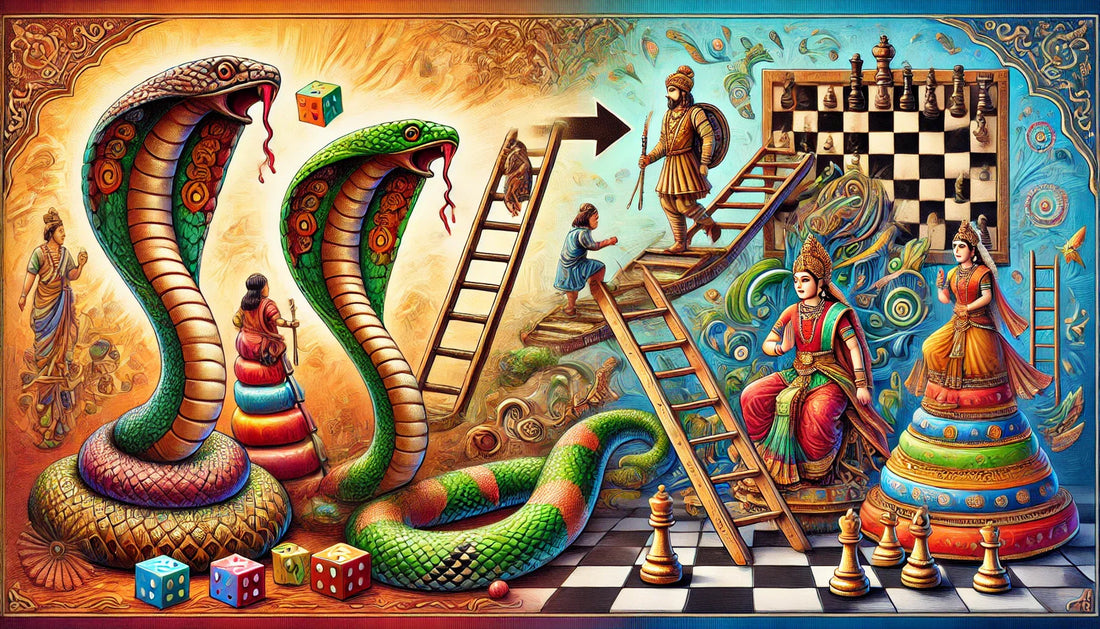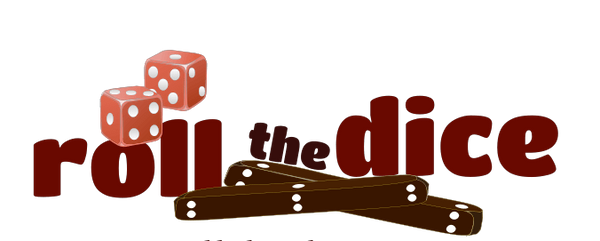
From Chowka Bara to Vimanam: The Evolution of Indian Board Games
Share
India’s love affair with board games is as old as its history. From intricately carved game boards found in ancient archaeological sites to today’s digital adaptations, board games have been an integral part of Indian culture. This blog explores the fascinating evolution of board games in India—their origins, transformations in design and gameplay, and their enduring cultural relevance.
The Beginnings: Ancient Board Games
India is often referred to as the cradle of board games. Some of the earliest games, like Chaturanga, date back to 6th-century CE and are considered precursors to modern chess. This game represented the four branches of the military: infantry, cavalry, elephants, and chariots, showcasing its roots in strategy and warfare.
Another timeless classic is Pachisi, which evolved into the Western game Ludo. Played on a cross-shaped board, Pachisi involved strategy and chance, with players navigating their pieces to the center of the board. Historical accounts indicate that it was popular among Indian royalty, with Emperor Akbar reportedly playing it on life-sized boards.
Board Games in the Medieval Era
During the medieval period, board games began to reflect societal values and spiritual teachings. Games like Gyan Chaupar (The Game of Knowledge) were used as metaphors for life’s journey. The game’s snakes and ladders symbolized virtues and vices, teaching moral lessons while providing entertainment.
Another noteworthy game from this period is Aadu Huli (Goat and Tiger). This asymmetrical strategy game pits tigers against goats, with the former trying to hunt while the latter strives to block the tigers. The gameplay reflects a balance of power and cooperation, making it both engaging and culturally significant.
The British Influence and Western Adaptations
The colonial era saw significant changes in Indian board games. Many traditional games were adapted into simplified Western versions. For instance, Snakes and Ladders, derived from Gyan Chaupar, was stripped of its philosophical undertones and marketed as a children’s game in Victorian England.
Meanwhile, games like Chowka Bara (a predecessor of Ludo) were overshadowed by imported games such as Monopoly and Scrabble. However, traditional games retained their charm in rural areas, where they continued to thrive as part of local festivals and family gatherings.
The Revival of Indian Board Games
In recent years, there has been a growing interest in reviving traditional Indian board games. Brands like Roll the Dice are playing a pivotal role in this renaissance, crafting high-quality game sets that celebrate India’s rich heritage. These games are not just about nostalgia; they also offer cognitive, social, and emotional benefits for players of all ages.
For instance, Chowka Bara fosters strategic thinking, teamwork, and cultural appreciation, while Navakankari (Nine Men’s Morris) enhances problem-solving and pattern recognition skills. The renewed popularity of these games highlights their timeless appeal and relevance in today’s fast-paced world.
The Digital Transformation
The digital age has brought a new dimension to Indian board games. Platforms like Tollugatti are digitizing classics like Pagade and Aadu Huli, making them accessible to a global audience. These digital versions retain the essence of traditional gameplay while introducing features like multiplayer modes and leaderboards.
Mobile apps and online platforms also cater to younger generations who prefer gaming on their devices. This fusion of tradition and technology ensures that these age-old games remain relevant and engaging for future generations.
Cultural Significance: More Than Just Games
Board games in India have always been more than mere entertainment. They serve as a window into the country’s history, culture, and values. Games like Alaguli Mane and Sholo Gutti reflect regional diversity, while others like Jaya: The Real Game, Real Heroes immerse players in the epics of Mahabharata and Ramayana.
These games also promote inclusivity and social bonding. Whether played during festivals, family gatherings, or casual evenings, they bring people together and foster a sense of community.
The Road Ahead
As we look to the future, the evolution of Indian board games seems poised for greater innovation. With sustainable materials, eco-friendly packaging, and digital adaptations, brands are blending tradition with modernity. Initiatives like educational workshops and cultural programs further enrich the experience, making these games a vital part of India’s cultural landscape.
If you’re eager to explore traditional Indian board games, visit Roll the Dice to discover a range of handcrafted game sets that celebrate India’s heritage. Whether you’re a history buff, a strategy enthusiast, or someone looking to bond with family, there’s something for everyone.
The journey of Indian board games from ancient times to the digital age is a testament to their enduring charm and adaptability. These games are not just relics of the past but living traditions that continue to educate, entertain, and inspire. By embracing and preserving them, we ensure that the joy and wisdom they bring will resonate for generations to come.
